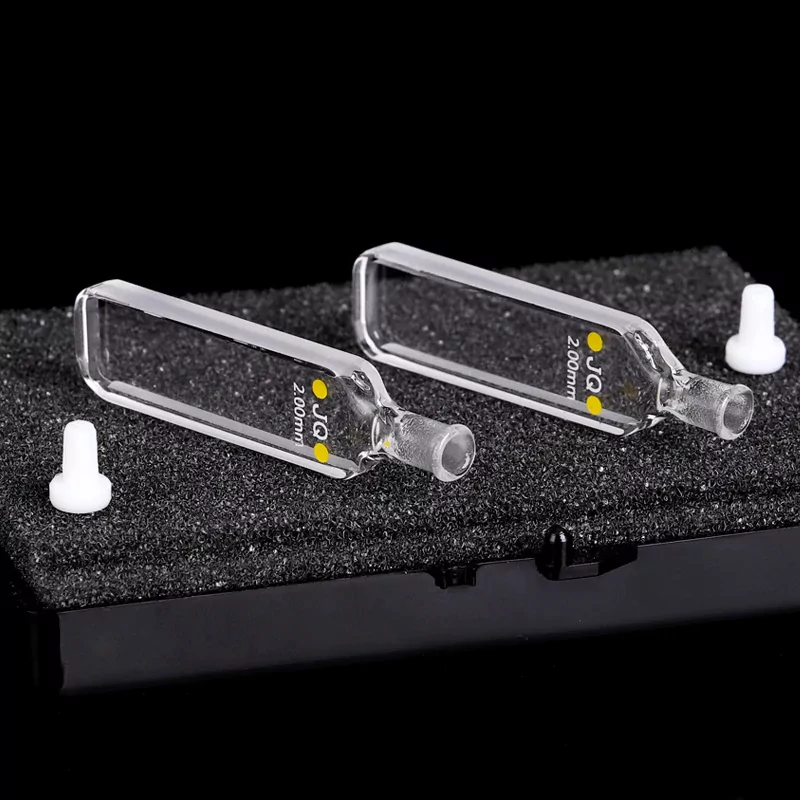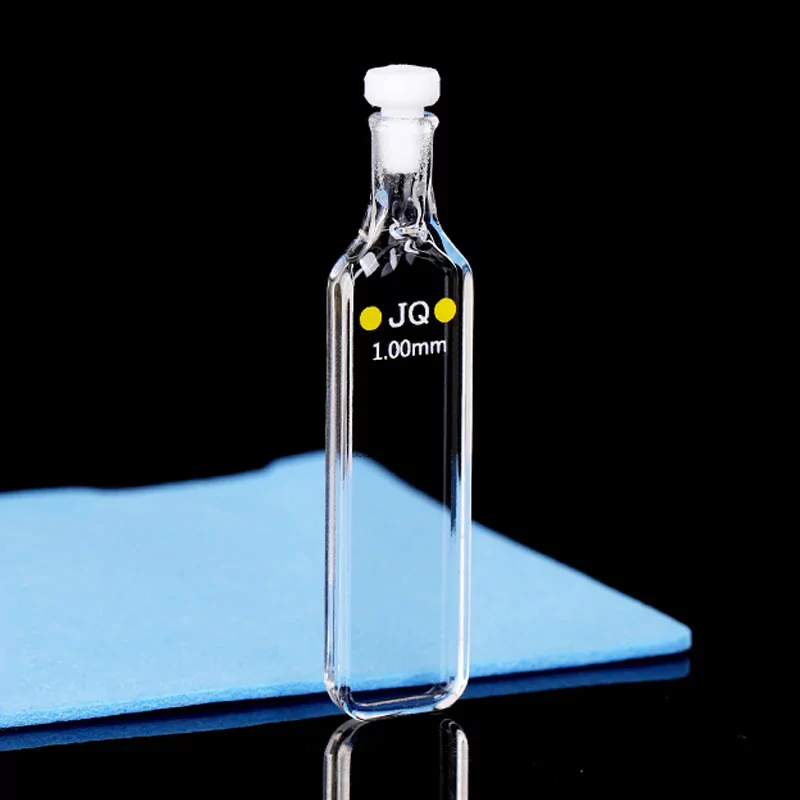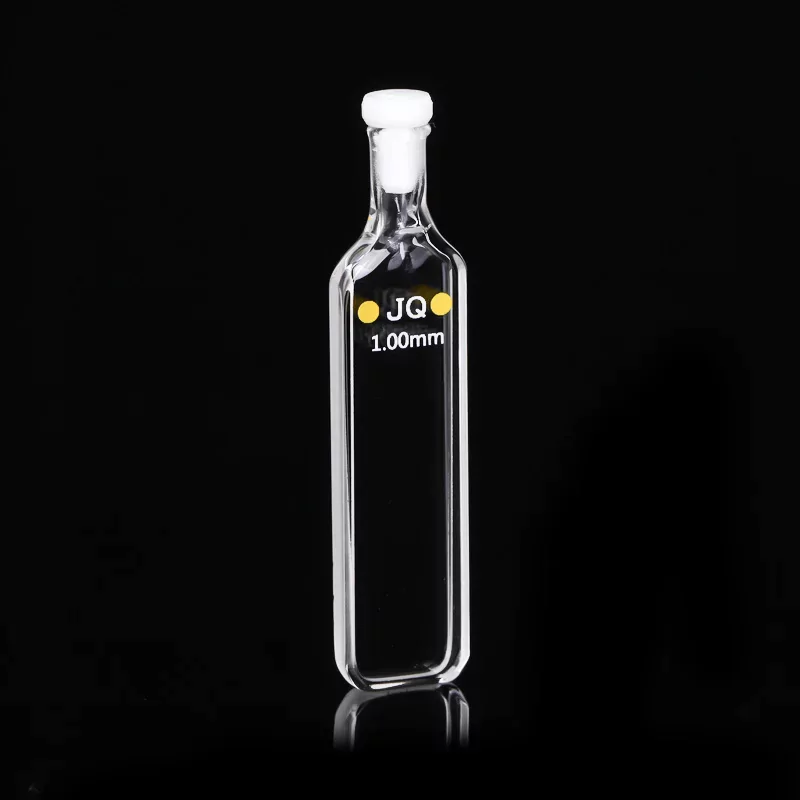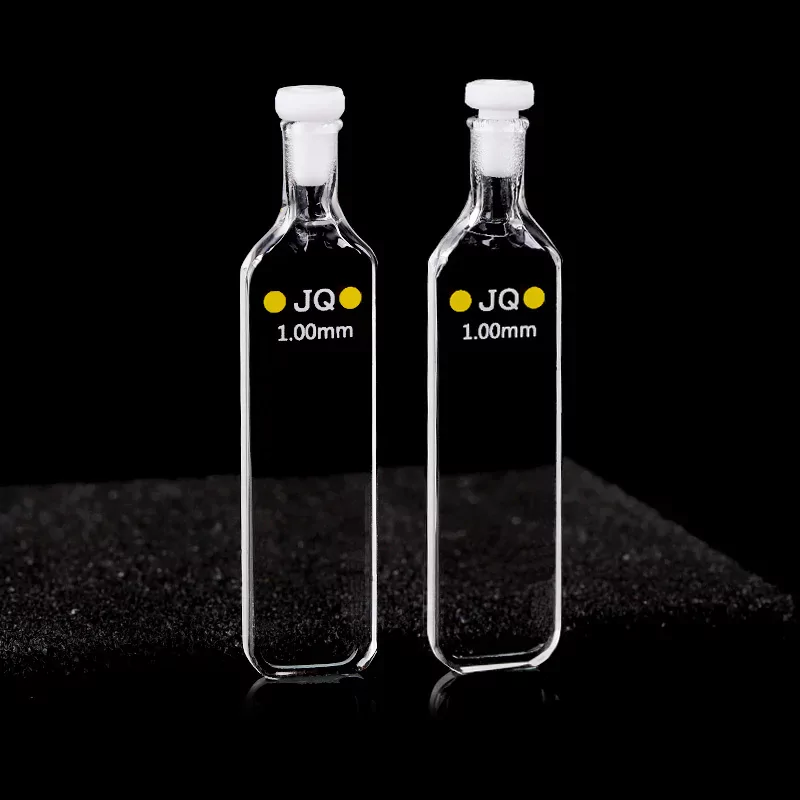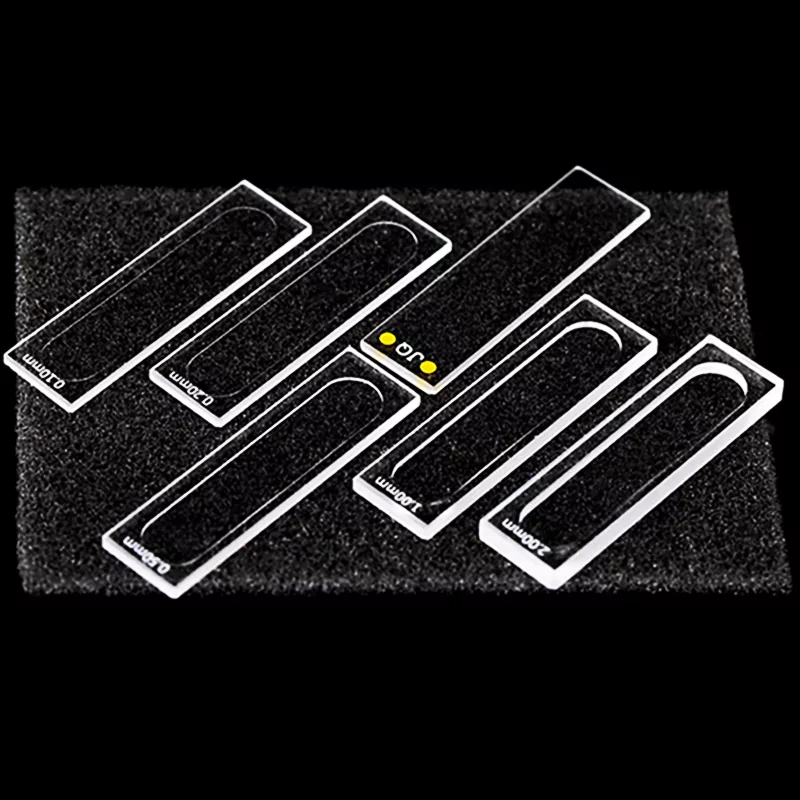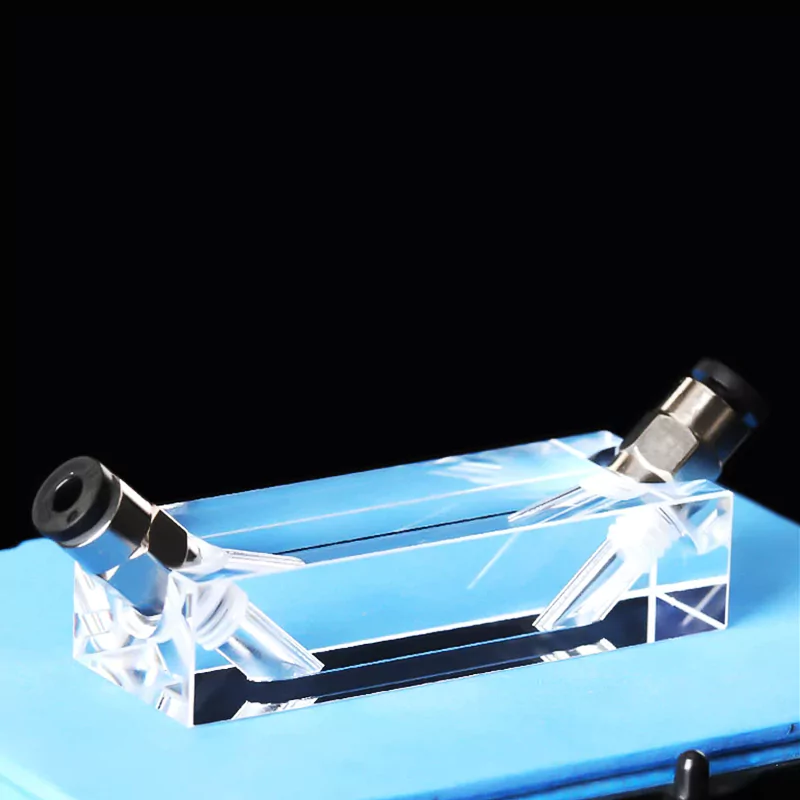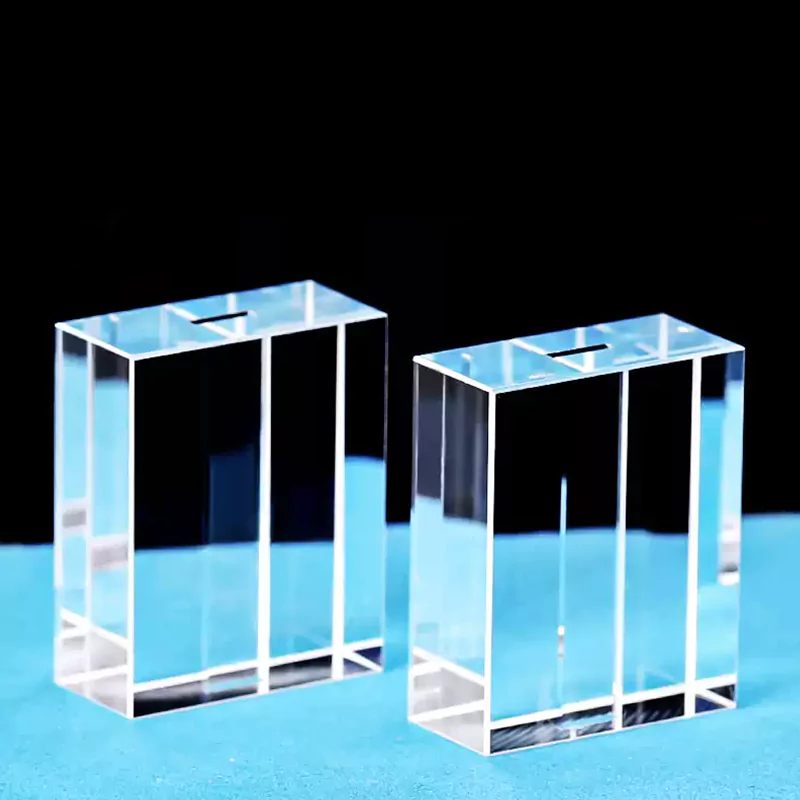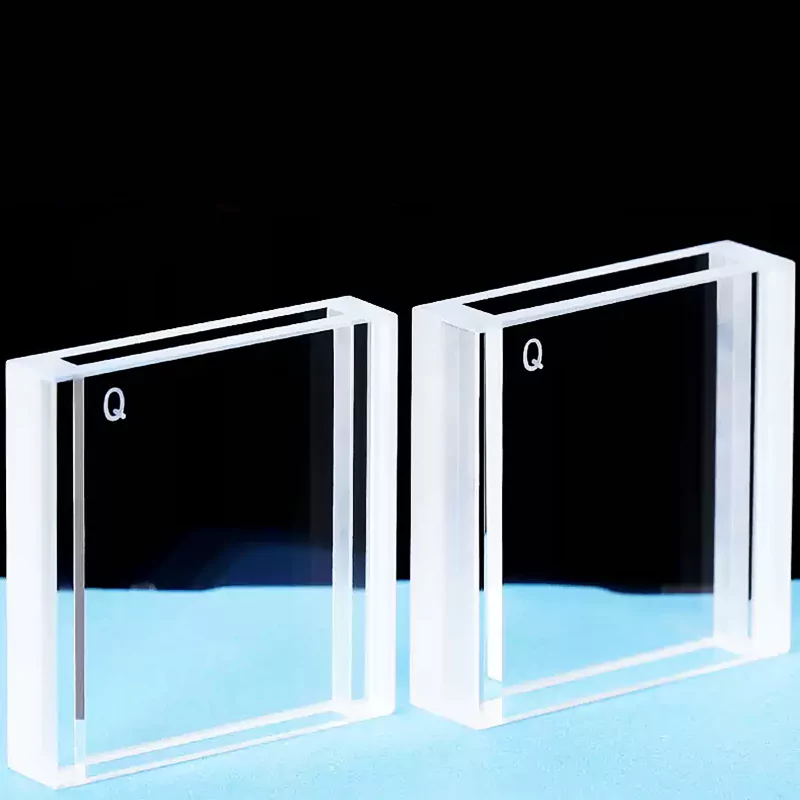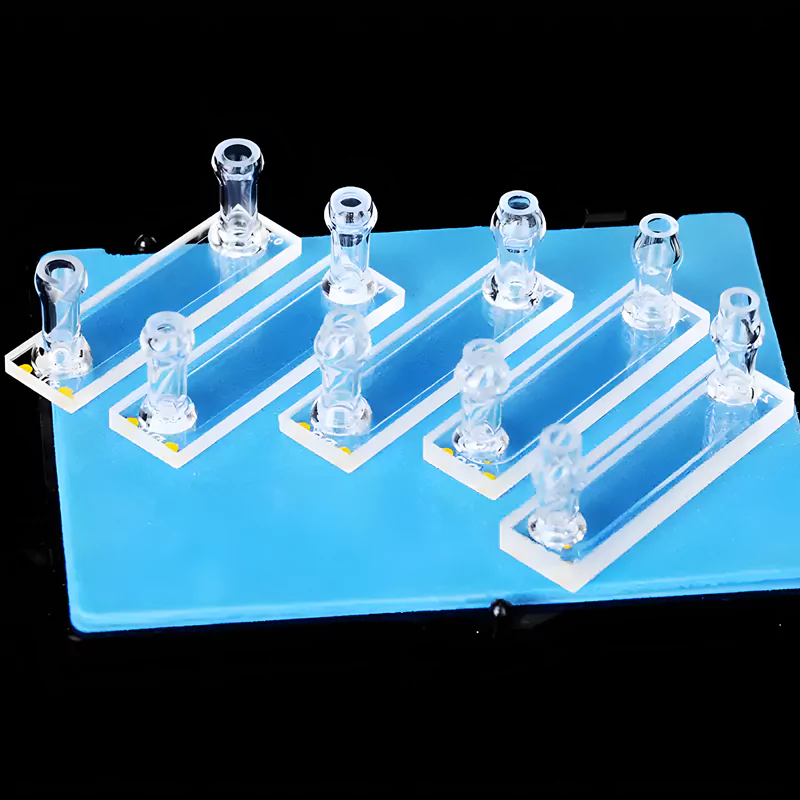- Home
- /
- Types
- /
- Quartz Cuvette
- /
- Quartz UV Cuvette
- /
- Secure-sealing Optical Cell Fused...
Secure-sealing Optical Cell Fused Quartz UV Cuvette with PTFE Stopper for R&D Labs -TOQUARTZ®
Features of Fused Quartz UV Cuvette with PTFE Stopper
TOQUARTZ® fused quartz UV cuvettes with PTFE stoppers are precision-crafted optical cells designed for accurate spectrophotometric and fluorescence measurements. Our cuvettes combine exceptional material properties with precision manufacturing to meet the demanding requirements of spectroscopy applications in research, pharmaceutical, and analytical laboratory settings.
Optical Performance
Manufactured from 99.995% pure fused quartz, offering excellent transmission in the UV-Visible range (200-2500nm) without absorption peaks, essential for accurate spectroscopic measurements.
Chemical Resistance
Exceptional resistance to acids, bases, and organic solvents. The PTFE stopper provides a secure, chemically inert seal for safe handling of corrosive or volatile samples.
Precision Design
Manufactured to tight tolerances (±0.1mm) for consistent path length accuracy, ensuring reproducible spectroscopic results across multiple measurements and between different cuvettes.
Thermal Stability
High temperature resistance up to 1100°C with low thermal expansion coefficient (5.5×10⁻⁷ /°C), allowing for consistent performance across a wide temperature range during experiments.
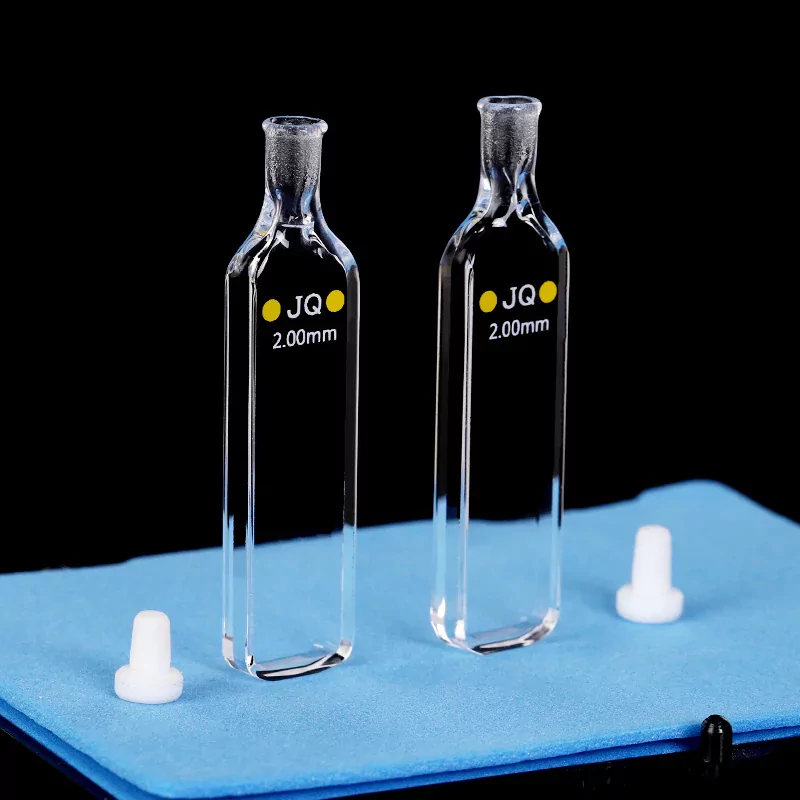
- 99.98% SiO₂ Purity
- 200-2500nm Range
- Secure Stopper Design
Technical Specifications & Dimensions of
Fused Quartz UV Cuvette with PTFE Stopper
Technical Specifications
| Property | Value |
| 1. Physical Properties | |
| Material | High purity fused quartz (99.98% SiO₂) |
| Density | 2.2 g/cm³ |
| Thermal Expansion Coefficient | 5.5 × 10⁻⁷ /°C |
| Max Operating Temperature | 1100°C |
| Stopper Material | PTFE (Polytetrafluoroethylene) |
| 2. Chemical Properties | |
| Chemical Resistance | Excellent resistance to acids, bases, and organic solvents |
| Water Absorption | None |
| Solvent Compatibility | Compatible with common laboratory solvents including water, alcohols, acetone, acids, bases |
| 3. Optical Properties | |
| Wavelength Range | 200-2500nm |
| Transmittance | >80% (Paired Testing) |
| Refractive Index | 1.4585 at 589.3nm |
| Surface Finish | Optical grade polished (standard) or black-walled (optional) |
Size Chart
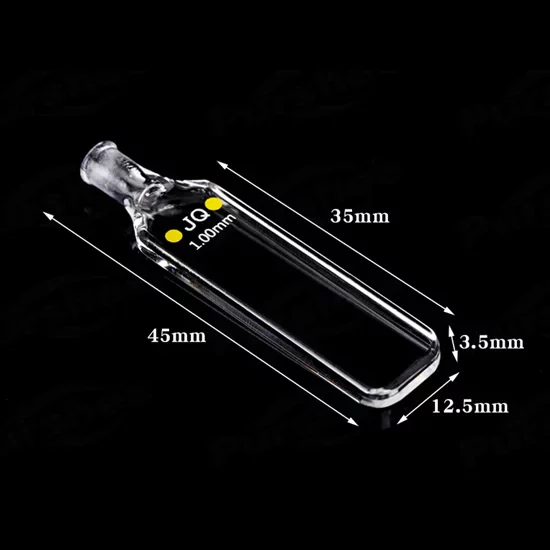
| Model | Description | Wavelength | Path Length | Volume | Transmittance | Outline Dimension |
| AT-BSM-028 | 350μl Quartz Cuvette Cell with PTFE Stopper | 200nm-2500nm | 1mm | 350μl | >80% (Paired Testing) | 12.5×3.5x45mm |
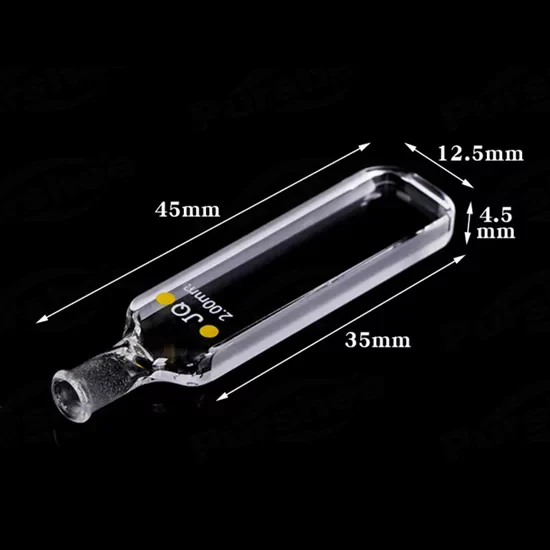
| Model | Description | Wavelength | Path Length | Volume | Transmittance | Outline Dimension |
| AT-BSM-032 | 700μl Quartz Cuvette Cell with PTFE Stopper | 200nm-2500nm | 2mm | 700μl | >80% (Paired Testing) | 12.5×4.5x45mm |
TOQUARTZ® Solving Laboratory Challenges with
Fused Quartz UV Cuvette with PTFE Stopper
Fused Quartz UV Cuvette with PTFE Stopper for Analytical Instrument Manufacturers
Key Advantages
-
Matched-pair tolerance within ±0.05mm
Ensures consistent optical path length across instrument batches for calibration-free integration. -
CAD-based design compatibility
Supports direct import into SolidWorks/AutoCAD with STEP/IGES files for seamless instrument housing fit.
TOQUARTZ® solution
A German spectrophotometer OEM faced a 4-week delay due to inconsistent cuvette dimensions from a previous supplier, causing a 12% rejection rate in final QC. TOQUARTZ provided matched-pair cuvettes with ±0.05mm tolerance and delivered 2,000 units in 18 days. The client integrated our CAD files into their design system, reducing assembly time by 22% and eliminating calibration drift complaints from end users.
Fused Quartz UV Cuvette with PTFE Stopper for Research Laboratories
Key Advantages
-
UV transmission ≥85% at 220nm
Enables accurate detection of nucleic acids and proteins in low-concentration samples. -
PTFE-sealed microvolume retention
Prevents evaporation in 350μl–700μl samples during extended fluorescence scans. -
Reproducibility across 50+ cycles
Cuvettes maintain <2% deviation in absorbance readings after repeated use in academic labs.
TOQUARTZ® solution
A Japanese university lab reported inconsistent UV absorbance in protein assays due to cuvette evaporation and poor sealing. TOQUARTZ supplied 100 units of 1mm path length cuvettes with PTFE stoppers, achieving <1.5% variance across 60 cycles. Delivery was completed in 6 working days, enabling the lab to resume time-sensitive experiments and publish results within their grant deadline.
Fused Quartz UV Cuvette with PTFE Stopper for Chemical Analysis Services
Key Advantages
-
Acid/base exposure endurance >500 cycles
Tested with 1M HCl and 1M NaOH, cuvettes retained >80% transmittance after 500 uses. -
PTFE stopper integrity under solvent stress
No deformation or leakage observed after 72-hour exposure to acetone, DMSO, and toluene. -
Optical clarity retention in high-throughput use
<3% haze increase after 1,000 insertions in automated spectrophotometer trays
TOQUARTZ® solution
A Canadian third-party testing lab processing 300+ samples/day experienced cuvette fogging and stopper failure with local suppliers. TOQUARTZ delivered 500 chemically resistant cuvettes within 5 business days. After 3 months of continuous use, the lab reported zero leakage incidents and a 40% reduction in cuvette replacement frequency, improving operational uptime and reducing consumable costs.
Customization Options for TOQUARTZ®
Fused Quartz UV Cuvette with PTFE Stopper
Dimensional Customization
- Special inner volumes
- Modified external dimensions
- Custom cell heights
Special Features
- Custom stopper designs
- Special surface treatments
- Engraved markings and scales
Integration Solutions
- Instrument-specific dimensions
- Custom cell holders
- Special packaging configurations
Custom Design Process
Requirement Consultation
TOQUARTZ® engineers discuss your specific application needs.
Technical Drawing
We provide detailed CAD drawings for your approval.
Prototype Development
Initial sample production for testing.
Validation
Testing and refinement to ensure specifications are met.
Production
Final manufacturing with strict quality control.
Usage Guide of Fused Quartz UV Cuvette with PTFE Stopper
Proper Handling
- Always handle cuvettes by the non-optical sides (typically the frosted or ribbed surfaces)
- Avoid touching the optical windows as fingerprints affect light transmission
- When inserting the PTFE stopper, apply gentle pressure with a slight twisting motion
- Store in protective cases when not in use to prevent scratches
- Never drop or apply excessive force to the cuvette
Clean Method
- Empty the cuvette immediately after use
- Rinse with an appropriate solvent compatible with your sample (often distilled water, ethanol, or acetone)
- For stubborn residues, soak in a suitable cleaning solution (2% Hellmanex III or similar laboratory detergent)
- Rinse thoroughly with distilled water
- For final cleaning, rinse with spectroscopic grade solvent
- Air dry or use filtered compressed air (never use paper towels on optical surfaces)
- Inspect optical surfaces against light to ensure they are clean and free of streaks
Sample Loading
- Fill to the recommended volume (typically 2/3 of the cuvette height)
- Ensure the liquid level is above the light path
- Avoid bubbles by gently tapping the cuvette or using a micropipette
- Secure the PTFE stopper to prevent evaporation during measurement
- For viscous samples, allow time for the sample to settle before measurement
Storage and Maintenance
- Store clean, dry cuvettes in their original protective case
- Keep PTFE stoppers with their matching cuvettes
- Periodically inspect for scratches or damage to optical surfaces
- For long-term storage, ensure cuvettes are completely dry
- Avoid storing near corrosive chemicals or in areas with temperature extremes
· Special holders may be required for non-standard path lengths
· PTFE stoppers are resistant to most laboratory chemicals
· Not recommended for use with hydrofluoric acid (HF)
· Maximum operating temperature: 1100°C for quartz, 260°C for PTFE stopper
Need Technical Support for Your Fused Quartz UV Cuvette Project?
Why Partner with TOQUARTZ
Direct Factory Advantage
As a direct manufacturer, we can cut out the numerous intermediate links.
Engineering Expertise
Technical team guides clients from material selection to design optimization, translating specs into deliverables.
Flexible Manufacturing
Handling standard & custom orders via small-batch expertise and prototyping rigor to meet urgent deadlines.
Quality
Assurance
Pre-shipment 3-step validation:
1. dimensional accuracy,
2. material purity ,
3. performance thresholds
Global Supply Chain
Reliable global logistics to industrial hubs (DE/US/JP/KR priority) with trackable milestones.
Releted Products
As a specialized manufacturer with direct factory capabilities, TOQUARTZ provides both standard and custom quartz solutions with engineering support throughout the specification and implementation process.
FAQ
Q: What is the temperature range for Fused Quartz UV Cuvette with PTFE stopper?
A: The quartz material can withstand temperatures up to 1100°C, but the PTFE stopper limits the practical temperature range to approximately 260°C (the maximum continuous use temperature for PTFE). For high-temperature applications, alternative sealing options can be discussed.
Q: Why use a Fused Quartz UV Cuvette with PTFE stopper instead of glass cuvettes?
A: Fused quartz provides superior UV light transmission down to 200nm, while standard glass absorbs UV light below 320nm. This makes quartz cuvettes essential for UV spectroscopy applications. The PTFE stopper offers better chemical resistance than plastic or glass stoppers, particularly with organic solvents and corrosive solutions.
Q: What is the wavelength range for Fused Quartz UV Cuvette with PTFE stopper?
A: TOQUARTZ® fused quartz UV cuvettes offer excellent transmission across a wide spectral range from 200nm (deep UV) to 2500nm (near infrared), making them versatile for various spectroscopic techniques including UV-Vis absorption, fluorescence, and some NIR applications.
Q: How do I clean a Fused Quartz UV Cuvette with PTFE stopper?
A: Clean immediately after use by rinsing with an appropriate solvent (water, ethanol, or acetone). For stubborn residues, soak in 2% laboratory detergent solution. Rinse thoroughly with distilled water followed by spectroscopic grade solvent. Air dry or use filtered compressed air. Never use paper towels on optical surfaces as they can cause scratches.
Q: What is the absorbance range of a Fused Quartz UV Cuvette with PTFE stopper?
A: TOQUARTZ® cuvettes provide accurate measurements across an absorbance range of approximately 0-3 AU (absorbance units), depending on your instrument specifications. The quartz material itself contributes minimal background absorbance in the UV-Visible range.
Note: For specialized applications requiring flanges or custom end fittings, contact our technical team for installation guidance.
Contact our engineering team for technical consultation and pricing. We’ll help you select the optimal specifications for your application requirements.

